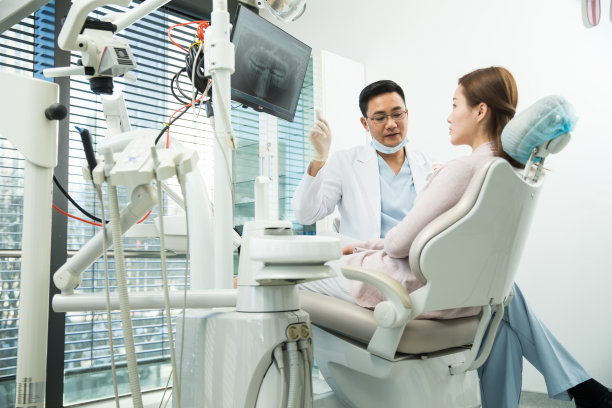The Essential Guide to Understanding the Procedure and Care After Extracting a Tooth for Optimal Recovery
Summary: Extracting a tooth can be a daunting experience, but understanding the procedure and postoperative care can significantly enhance your recovery. This guide delves into what to expect before, during, and after the extraction, offering essential tips for managing pain, reducing the risk of complications, and ensuring optimal healing. With insights into proper oral hygiene, diet modifications, and when to seek further medical attention, this article serves as a comprehensive resource to help you navigate through the recovery phase smoothly and efficiently. Whether youre apprehensive about the procedure or seeking ways to expedite healing, this essential guide will equip you with the tools necessary for a successful recovery.
1. Understanding the Tooth Extraction Procedure

Before a tooth extraction takes place, it is vital to have a clear understanding of what the procedure entails. Consultation with your dentist usually includes an examination of your dental history and the circumstances surrounding the extraction. Your dentist will explain the reasons for removing the tooth, especially in cases like severe decay, infection, or overcrowding.
During the procedure, anesthesia is typically administered to ensure you remain comfortable. Depending on the tooths location and complexity, sedation may also be an option. The dentist will create access to the tooth, gently removing it from the bone socket, often requiring specialized instruments. Understanding this process can help alleviate anxiety and prepare you mentally for the experience.
A thorough understanding of the extraction procedure can also assist in setting realistic expectations for recovery. While the operation is relatively quick, the healing process may take longer, necessitating proper care afterward. Gathering all necessary information ahead of time is crucial for a smooth transition from extraction to recovery.
2. Key Post-Extraction Care Practices
Post-extraction care plays a critical role in ensuring a swift and effective recovery. Rest is paramount; aim to take it easy for at least 24 hours following the procedure. Avoid strenuous activities, as they can increase blood flow to the area and potentially lead to excess bleeding.
Managing pain is also an important aspect of recovery. Your dentist may prescribe pain medication or recommend over-the-counter options. Applying ice packs to the affected area intermittently can help alleviate discomfort and reduce swelling. Remember to follow your dentists instructions regarding medication and ice application to achieve optimal results.
It’s also essential to maintain a sterile environment around the extraction site. After the procedure, avoid succumbing to the temptation of rinsing your mouth vigorously or using straws, as these actions can dislodge the blood clot necessary for healing. Instead, gently rinse with warm salt water starting 24 hours after the extraction to help keep the area clean.
3. Dietary Adjustments for Optimal Recovery
After a tooth extraction, the foods you consume can significantly impact your recovery process. It is advisable to follow a soft-food diet for the first few days. Items such as mashed potatoes, yogurt, smoothies, and soups are both nutritious and easy to eat without irritating the extraction site.
Hydration is equally important; however, be cautious not to use straws during the initial healing phase, as the suction can disturb the blood clot and lead to a painful condition known as dry socket. Instead, drink plenty of fluids directly from cups and opt for cooler beverages to reduce swelling.
As your healing progresses, you can gradually reintroduce more solid foods. Listen to your body; if you experience increased discomfort with certain items, it’s best to give your mouth more time to heal before attempting them again. Consulting with your dentist about acceptable foods at various stages can further ensure your dietary choices support optimal healing.
4. Recognizing Complications and When to Seek Help
While most tooth extractions heal without issues, being aware of potential complications is vital for swift intervention. Signs of infection include fever, increased swelling, and pus discharge from the extraction site. If you notice any of these symptoms, contact your dentist immediately for further evaluation.
Another common issue is dry socket, which occurs when the blood clot fails to develop or is dislodged. This condition is usually accompanied by intense pain that radiates from the extraction site. If you suspect dry socket, visiting your dentist promptly can lead to applicable treatments to alleviate discomfort.
Lastly, unexpected prolonged bleeding or persistent pain that doesn’t subside within a few days should be taken seriously. These may indicate a more serious problem and warrant immediate consultation with your healthcare provider. Staying alert to these signs can help catch complications early and promote an efficient recovery.
Summary:
Understanding the tooth extraction process is essential for managing expectations and reducing anxiety. Proper postoperative care, including rest and pain management, plays a critical role in facilitating healing. Dietary modifications can also enhance recovery, making it vital to consume suitable foods and stay hydrated. Lastly, recognizing complications early can help you seek timely medical attention and ensure a smooth recovery.
This article is compiled by Vickong Dental and the content is for reference only.



